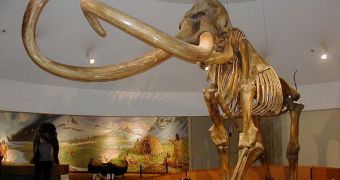The generally accepted date for the mammoth's extinction in the international scientific community is sometime around 12,000 years ago, shortly before humans took over the world and learned agriculture. These estimates are based on numerous fossil records, which all show that the last mammoths and mastodons died at that time. But a new set of experiments, conducted on DNA recovered from small soil samples, reveals that pockets of the beasts, as in reduced groups, might have endured until no more than 7,600 years ago, LiveScience reports.
“We don't know how long it takes to pinch out a species. Extinctions often seem dramatic and sudden in fossil records, but our study provides an idea of what an extinction event might look like in real time, with imperiled species surviving in smaller and smaller numbers until eventually disappearing completely,” American Museum of Natural History (AMNH) Curator of Mammalogy Ross MacPhee says. The DNA samples were recovered from specimens buried in Alaskan permafrost between 10,500 and 7,600 years ago, the expert adds.
Knowing that it's very difficult to find organic remains of creatures that last roamed the land between 15,000 and 12,000 years ago, the research group that MacPhee led took a different approach to studying the extinction event. On a side note, other than mammoths and mastodons, a large number of other species vanished as well, including saber-tooth cats, giant slots, and dire wolves. The AMNH expert decided to look for DNA samples instead, which can be wonderfully preserved in permafrost even in places where there are no clear indicators that other organic remains, such as bones, exist.
“In principle, you can take a pinch of dirt collected under favorable circumstances and uncover an amazing amount of forensic evidence regarding what species were on the landscape at the time,” the University of Copenhagen Center for GeoGenetics Director, Eske Willerslev, adds. He has also been a researcher in the new investigations, which are detailed in the latest issue of the respected journal Proceedings of the National Academy of Sciences (PNAS).
According to a model devised by the team, the last mammoth populations, featuring a few hundred individuals, lived some 8,000 years ago. “At this point, mammoths and horses were barely holding on. We may actually be working with the DNA of some of the last members of these species in North America,” Canadian team member Duane Froese, from the University of Alberta, concludes.

 14 DAY TRIAL //
14 DAY TRIAL //